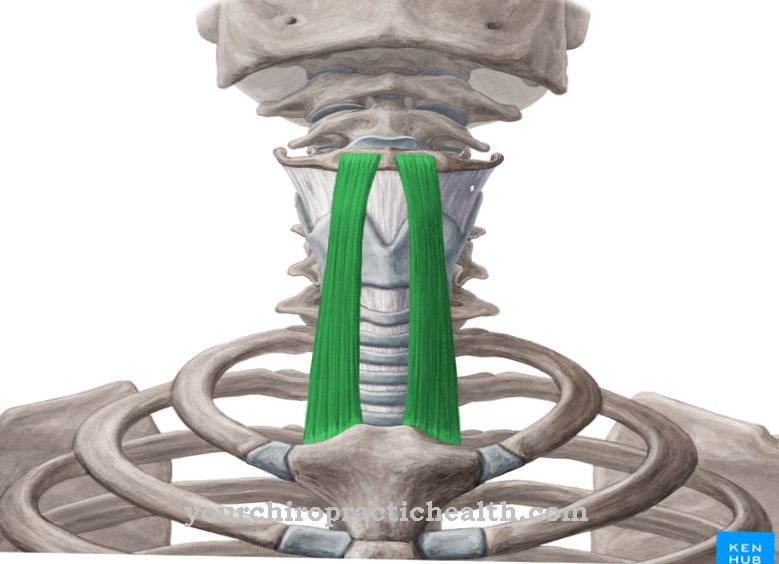The Almonds - in technical jargon Tonsils - are known to everyone. After all, tonsillitis (tonsillitis) is one of the 20 most common reasons to seek the advice of a doctor. But very few people know what these small organs are actually good for.
What are almonds?
.jpg)
Man by no means only has two Almonds - There are even four types of almonds in human anatomy:
Pharyngeal tonsils (tonsilla pharyngica), palatine tonsils (tonsilla palatina), tongue tonsils (tonsilla lingualis) and tubal tonsils (tonsilla tubaria). When speaking of tonsils in general, this mostly refers to the palatine tonsils (tonsilla palatina).
All of these tonsils are part of the so-called Waldeyer pharynx, a system of lymph tissue that is entrusted with the tasks of immune defense.
Anatomy & structure
The different Tonsils are located in the oral cavity, nasal cavity and throat. The palatine tonsils are clearly visible in a swollen state with the mouth open, as they are located directly between the palatal arches.
The pharyngeal tonsils, on the other hand, are located on the roof of the pharynx, with a connection to the airways, the tongue tonsils on the base of the tongue and the tubular tonsils finally close to the ear trumpet of the inner ear. All tonsils have the structure in common: they are a collection of lymph follicles that can be found below the mucous membrane. The surface is littered with deep indentations.
These indentations are called crypts and they are there to enlarge the surface of the tonsils. The surface of the tonsils in the expanded state would be an incredible 300cm². In the immediate vicinity of the tonsils there are usually glands that ensure that they are flushed through and that are intended to prevent accumulations of all kinds in the crypts.
Function & tasks
_2.jpg)
The Almonds are important for the immune system and have a kind of monitoring function at relevant inputs of the body. They sit exactly where breath or food enters the body and support the immune defense by analyzing penetrating structures and recognizing bacteria.
In this way, other, active structures of the immune defense can be prepared to ward off the danger. The nasal airways pass through the pharyngeal tonsil on the roof of the pharynx, ingested food must pass through the tongue tonsil and the palatine tonsil, and breath that comes in through the mouth also falls within the examination area of the palatine tonsil.
It is interesting that the tonsils in children are relatively large, but lose tissue with increasing age.
Illnesses & ailments
Probably the most common problem with the Almonds occurs is the inflammation of the tonsils (tonsillitis). This can occur both acutely and chronically or recurrently and is triggered either by bacteria or viruses.
This leads to clear reddening and swelling of the tonsils, sometimes with whitish-yellow fibrin coatings. Inflammation of the tonsils can also occur unilaterally. Depending on the course, trigger and severity, tonsillitis is treated in different ways. In the case of chronic, severe tonsillitis, it is sometimes advisable to remove the tonsils. Also as a result of Pfeiffer's glandular fever, a severe infection with the Epstein-Barr virus and an extremely protracted course, the tonsils become inflamed and are completely covered with fibrin. Here only the pain can be treated with painkillers.
Tonsil stones are another extremely uncomfortable problem that can arise with the tonsils. These form as a result of the accumulation of food particles, rejected cells and bacteria in the crypts of the tonsils and throat and can be a cause of strong bad breath. In order to prevent tonsil stones, the tonsil region can be carefully cleaned with an oral irrigator. In the case of the pharynx, an enlargement leads to ear infections and hearing loss.
The spread of the tissue is popularly known as a polyp and can be removed by the surgeon. The tubal tonsil can also swell and thus hinder the pressure equalization of the inner ear. Thus, the symptoms of swollen tonsils are a feeling of pressure on the respective ear and possibly even hearing loss. Since the crypts of the tongue tonsils open into the salivary glands, this is so well flushed that an enlargement or inflammation is extremely unlikely.
You can find your medication here
➔ Medication for tonsillitis & sore throat













.jpg)

.jpg)
.jpg)











.jpg)